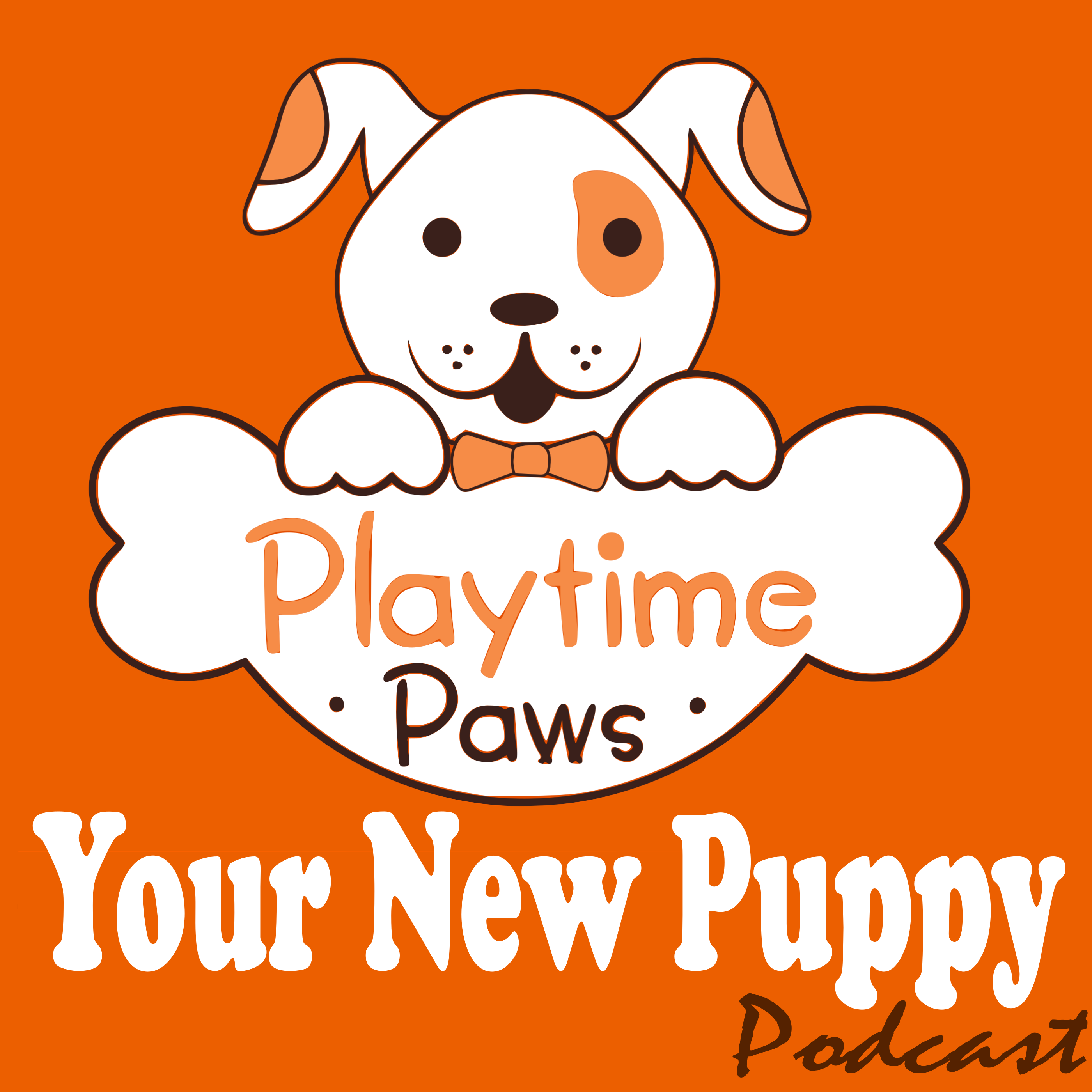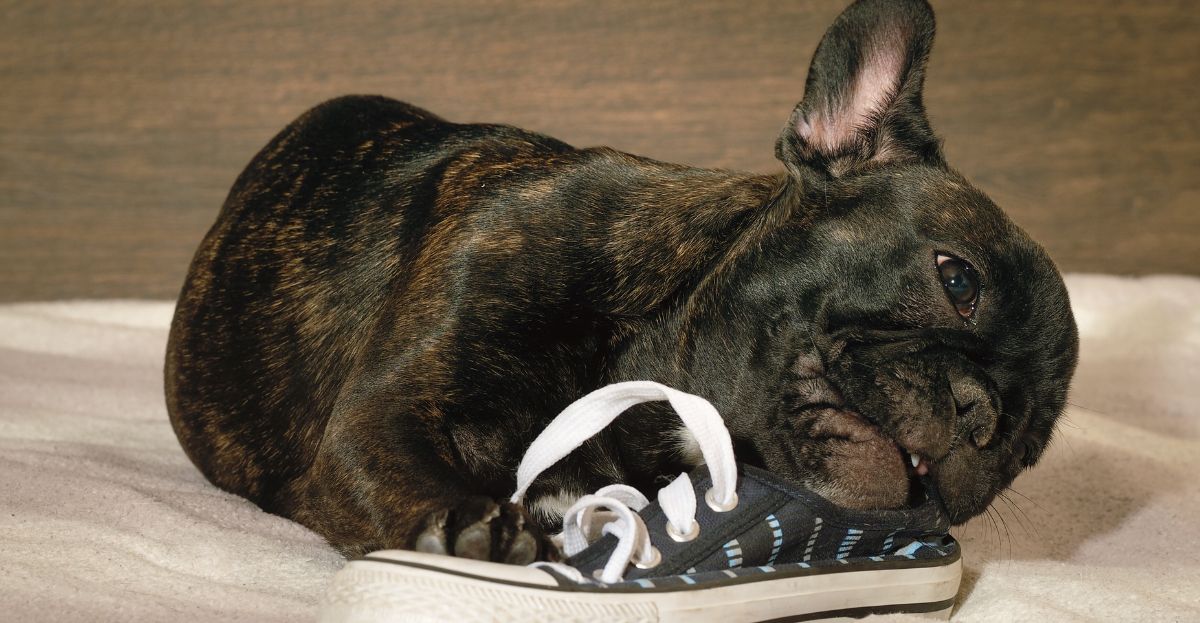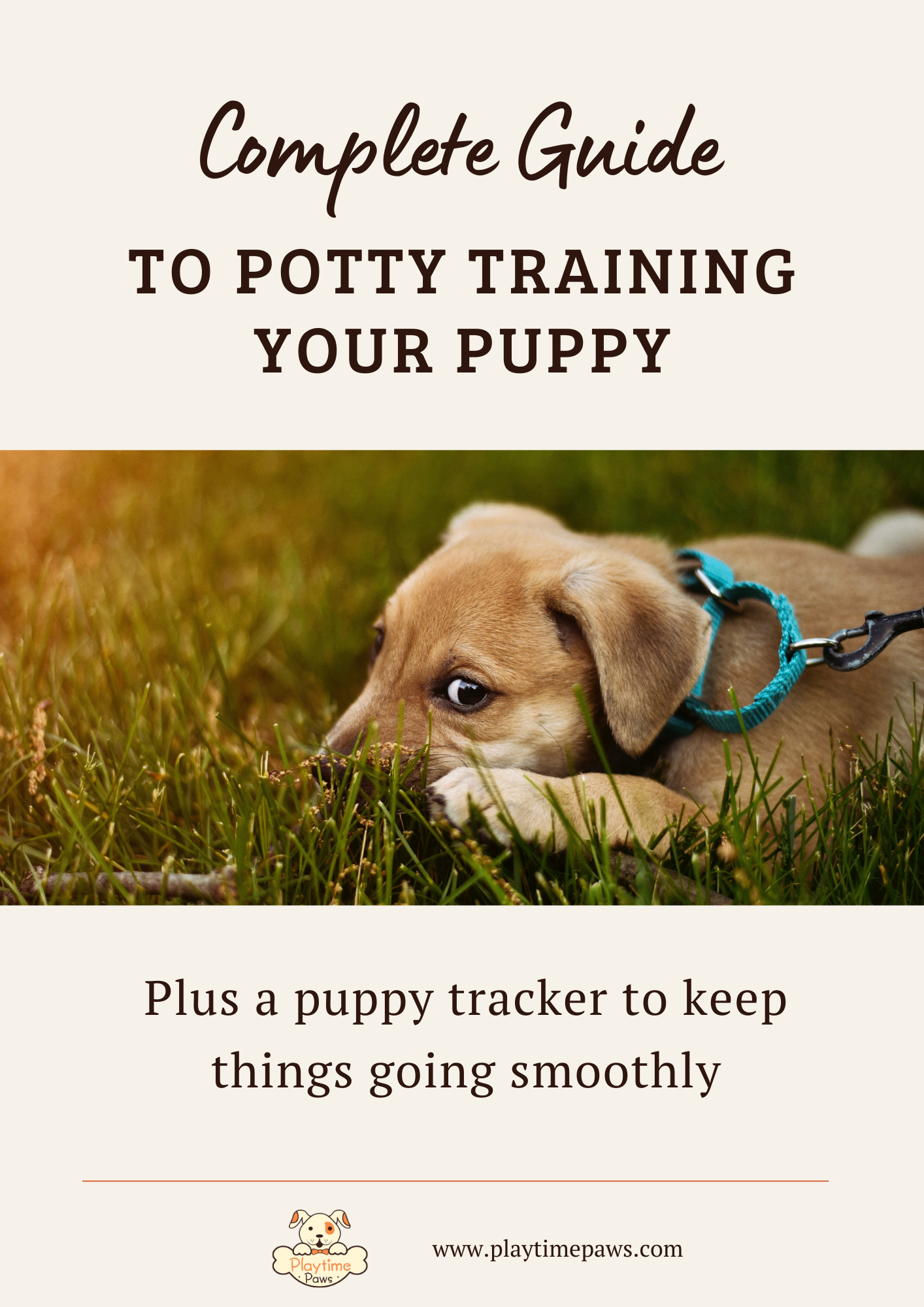Let's dive into a hot topic that many dog owners face: dogs stealing and chewing on things they shouldn’t.
Whether it’s your favorite pair of flip-flops or something dangerous, this behavior can be incredibly frustrating—and sometimes scary.
Let's get into why dogs do this and, more importantly, how we can redirect this behavior to keep both your belongings and your pup safe.

🎧Like to listen?
Check out my Your New Puppy's Podcast episode on this same topic.
YNP #006: My Dog Steals My Stuff! How to Protect Your Dog and Your Things or anywhere you listen to podcasts.
Why Do Dogs Steal and Chew on Your Stuff?
Dogs chew for a variety of reasons. It’s a natural instinct, especially for puppies who explore the world with their mouths. Chewing can also be a sign of boredom, anxiety, or a way to get attention.
Adult dogs who developed this habit as puppies may continue it, making it crucial to address early on.
The Dangers of Chewing
Beyond the annoyance of finding your shoes in pieces, chewing can lead to dangerous situations. Dogs can ingest harmful objects, leading to emergency vet visits.
Chewing can also escalate to other behaviors like resource guarding, where your dog aggressively defends the object they’ve stolen.
Preventing and redirecting this behavior protects both your dog and your belongings.
Let's Prevent Stealing in the First Place
Our dogs aren't preprogrammed to know the difference between our dirty sock and their toy. To them it's all fun to play with. It's up to us to teach them the difference.
Chewing is also a natural instinct that we're not going to stop. It's can be extremely healthy for them and it can be a great source of entertainment if we teach them what they are allowed to chew on.
The first step is to prevent them from finding the inappropriate object in the first place.
Create a Controlled Environment
One of the first steps in managing your dog’s chewing is to create a controlled environment.
This means removing access to items they shouldn’t chew on and supervising them closely, especially puppies and new dogs.
It might sound like a lot of work, but it’s essential for setting boundaries and teaching them what’s appropriate to chew.
Remember picking up your shoes or blocking off the dining room is part of training your dog - and maintaining your sanity.
Using the Crate
Crate training can be incredibly helpful when you can’t supervise your dog.
The crate provides a safe space where they can relax with their own toys and chews.
This is essential for puppies because it acts as triple duty for potty training and separation as well.
If you’re new to crate training, check out Episode #5 of my podcast for tips on making your dog love their crate.
A pen may also be appropriate for a dog that's already potty trained. Check out Episode #77 of Your New Puppy's podcast to learn the difference between a crate and pen.
Check out Episode 077 of Your New Puppy's Podcast: Using a Crate Vs Using a Pen

Redirect Inappropriate Chewing
When your dog grabs something they shouldn’t, stay calm and swap the inappropriate item with a suitable toy or treat. It has to be greater value than the object that they stole.
This method teaches them two things:
- Good things happen when they give things up willingly.
- What the appropriate thing to chew on is.
I know this may feel like you're rewarding the stealing and inappropriate chewing but you're not.
Once they have the object the lesson becomes "give it to my willingly".
It’s important not to chase or yell at them, as this can turn into a fun game for them. Try running away and throwing a party somewhere else. This creates FOMO and watch your dog come to you!
Reward Appropriate Play and Chewing
The flip side redirecting with a toy or treat is when your pup chooses to play with or chew on their own toy (something appropriate) reward them!
Go play with them, give them attention or simply tell them what a good pup they are.
Keep Their Toys Interesting
Another common mistake I see is leave all their toys out thinking they can choose to play with anyone they want. What ends up happening is all of their toys are no big deal, because they can play with them all the time.
You know what is a big deal?
The sock that just dropped from the laundry basket, the kids shoe that was accidently left out, or the food wrapper that fell from the counter.
Instead let's make their toys just as exciting by rotating their toys. If your dog hasn't see their toy in a week it's going to feel "new" to them.
Real-Life Success: A Case Study
Let me share a success story from my own experience.
I had a client with a bulldog who would steal and chew everything in sight. It started because he was bored, then he learned that he got lots of attention. He created a super fun game of "driving my human's nuts".
Eventually he started walking into every room and immediately tried to find something to steal. It was one of my toughest cases of this behavior.
By creating a controlled environment, keeping fun "new" toys on stand by, staying calm and trading whenever he did get something, and rewarding him when he picked up his own toys, we saw significant progress.
This pup learned to ignore slippers and focus on his toys instead, making life much easier for both him and his owner.

Key Takeaways for Preventing Chewing
- Create a Controlled Environment: Remove tempting objects and supervise your dog.
- Use a Crate: When you can’t supervise, a crate (or pen) is a safe alternative.
- Redirect Behavior: Calmly swap inappropriate items for suitable toys or treats.
- Reward Good Behavior: Reward your dog with attention and play whenever they choose to play with their own toys.
- Rotate Toys: Keep your dog engaged with a rotation of "new" toys.
Still Struggling with Potty Training?
My tried and true potty training process. You'll know exactly what to do when and how to handle those inevitable accidents. Plus tips and tricks to make everything go smoother.
Includes a bonus Potty Tracker for you to use to keep track of your dog’s schedule, any accidents that happen, and your wins!
Let's wrap it up
Remember, dogs are naturally playful and built to chew. The problem is they don't know the difference between your furniture and the sticks outside.
With these strategies, you can help your dog understand what’s appropriate to chew and protect your dog and your stuff in the process.
What's Next?
If you're ready for full personalized support in raising your new puppy I'd love for you to join YOUR Perfect Puppy, my 4-week online course designed to teach new puppy owners the skills and knowledge needed to raise a happy and well-behaved dog, covering topics from basic cues and potty training to building a relationship of trust and respect. Check out all the details here.
If you're ready for full personalized support in raising your new puppy I'd love for you to join YOUR Perfect Puppy, my 4-week online course designed to teach new puppy owners the skills and knowledge needed to raise a happy and well-behaved dog, covering topics from basic cues and potty training to building a relationship of trust and respect. Check out all the details here.
When you join YOUR Perfect Puppy you receive 6 months inside Playtime Paws Academy. The Academy is membership program that provides ongoing support to new puppy owners through features such as weekly live calls with me, a community forum, and a database of enrichment activities. This combination of structured learning and ongoing support aims to empower puppy owners to confidently navigate the challenges of puppyhood and build a strong bond with their dogs.



